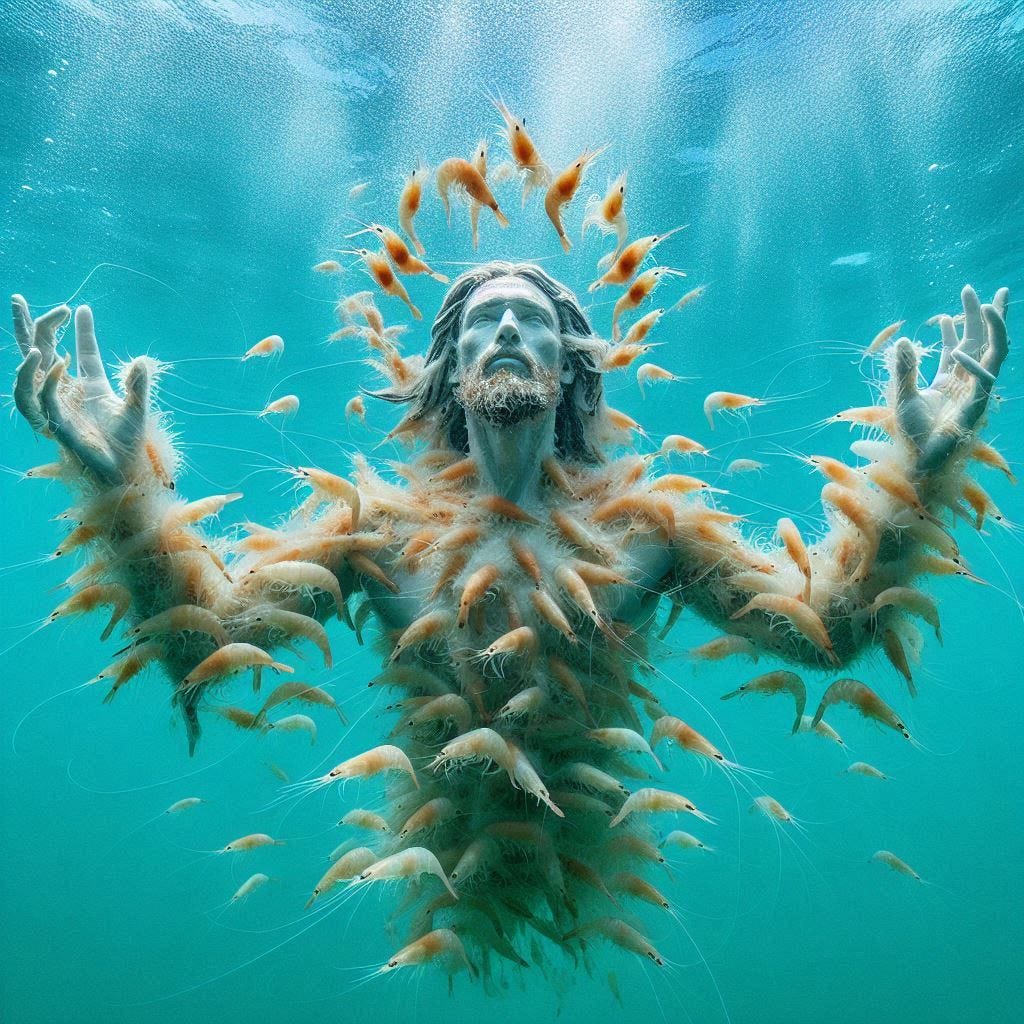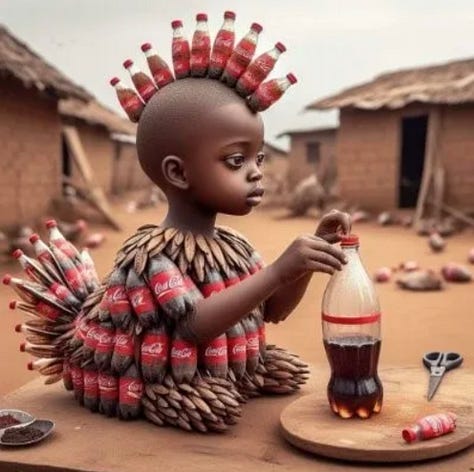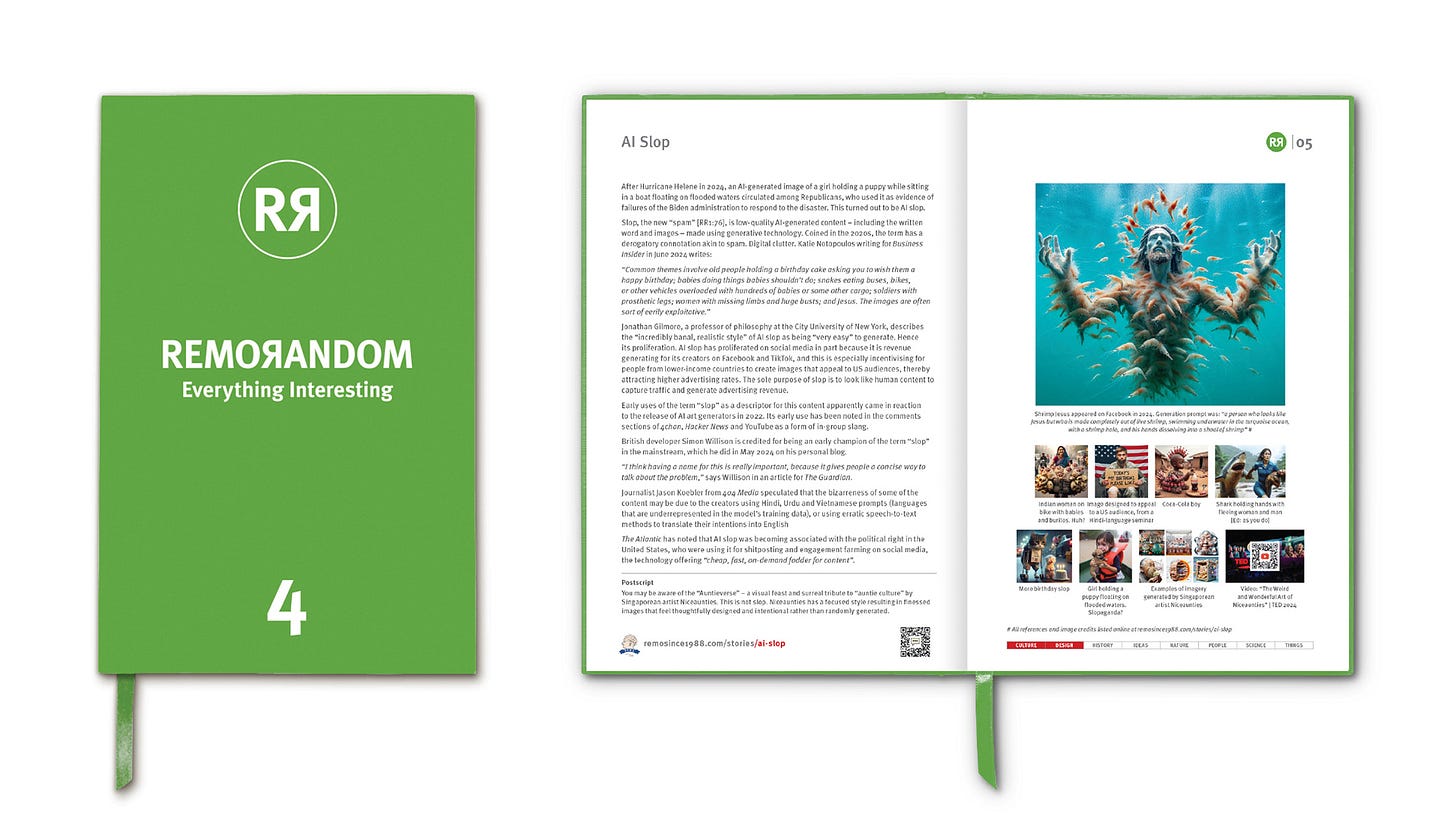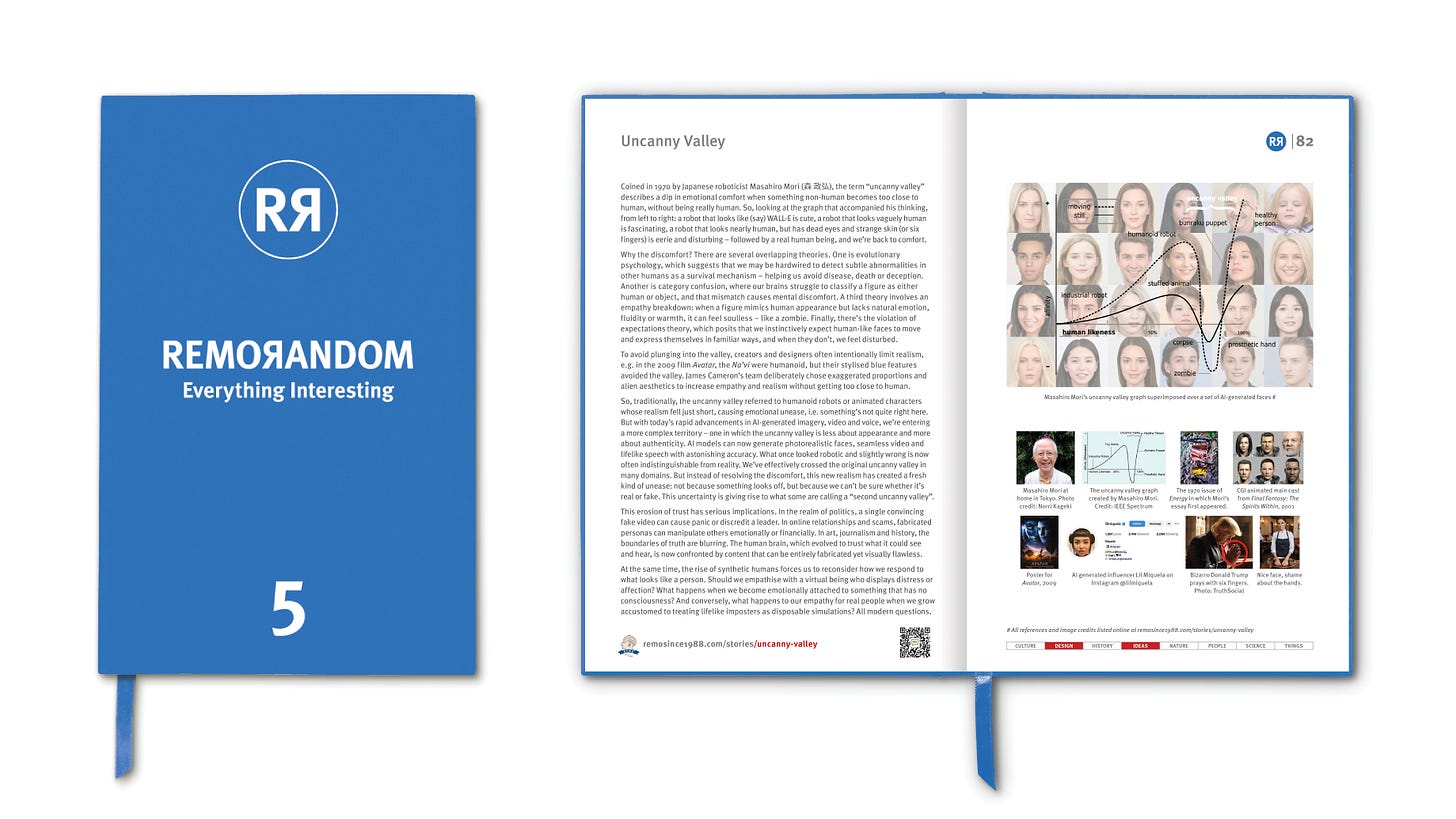AI Slop
Yesterday Macquarie Dictionary announced that "AI slop" had been selected by its committee (and voted by the public) as the Word of the Year for 2025. What is AI slop?

After Hurricane Helene in 2024, an AI-generated image of a girl holding a puppy while sitting in a boat floating on flooded waters circulated among Republicans, who used it as evidence of failures of the Biden administration to respond to the disaster. This turned out to be AI slop.
Slop, the new “spam” [RR1:76], is low-quality AI-generated content – including the written word and images – made using generative technology. Coined in the 2020s, the term has a derogatory connotation akin to spam. Digital clutter.
Katie Notopoulos writing for Business Insider in June 2024 writes:
“Common themes involve old people holding a birthday cake asking you to wish them a happy birthday; babies doing things babies shouldn’t do; snakes eating buses, bikes, or other vehicles overloaded with hundreds of babies or some other cargo; soldiers with prosthetic legs; women with missing limbs and huge busts; and Jesus. The images are often sort of eerily exploitative.”






Jonathan Gilmore, a professor of philosophy at the City University of New York, describes the “incredibly banal, realistic style” of AI slop as being “very easy” to generate. Hence its proliferation. AI slop has proliferated on social media in part because it is revenue generating for its creators on Facebook and TikTok, and this is especially incentivising for people from lower-income countries to create images that appeal to US audiences, thereby attracting higher advertising rates. The sole purpose of slop is to look like human content to capture traffic and generate advertising revenue.
NB: This kind of AI slop is to be distinguished from the more recent proliferation of deep fake videos that are generated using OpenAI’s Sora 2 or Google’s Veo 3.
Early uses of the term “slop” as a descriptor for this content apparently came in reaction to the release of AI art generators in 2022. Its early use has been noted in the comments sections of 4chan, Hacker News and YouTube as a form of in-group slang.
British developer Simon Willison is credited for being an early champion of the term “slop” in the mainstream, which he did in May 2024 on his personal blog.
“I think having a name for this is really important, because it gives people a concise way to talk about the problem,” says Willison in an article for The Guardian.
Journalist Jason Koebler from 404 Media speculated that the bizarreness of some of the content may be due to the creators using Hindi, Urdu and Vietnamese prompts (languages that are underrepresented in the model’s training data), or using erratic speech-to-text methods to translate their intentions into English
The Atlantic has noted that AI slop was becoming associated with the political right in the United States, who were using it for shitposting and engagement farming on social media, the technology offering “cheap, fast, on-demand fodder for content”.
Postscript
You may be aware of the “Auntieverse” – a visual feast and surreal tribute to “auntie culture” by Singaporean artist Niceaunties (Instagram @niceaunties) This is not slop. Niceaunties has a focused style resulting in finessed images that feel thoughtfully designed and intentional rather than randomly generated.
See Also: Uncanny Valley [RR5:82]
Video
REMORANDOM Book Chapters






